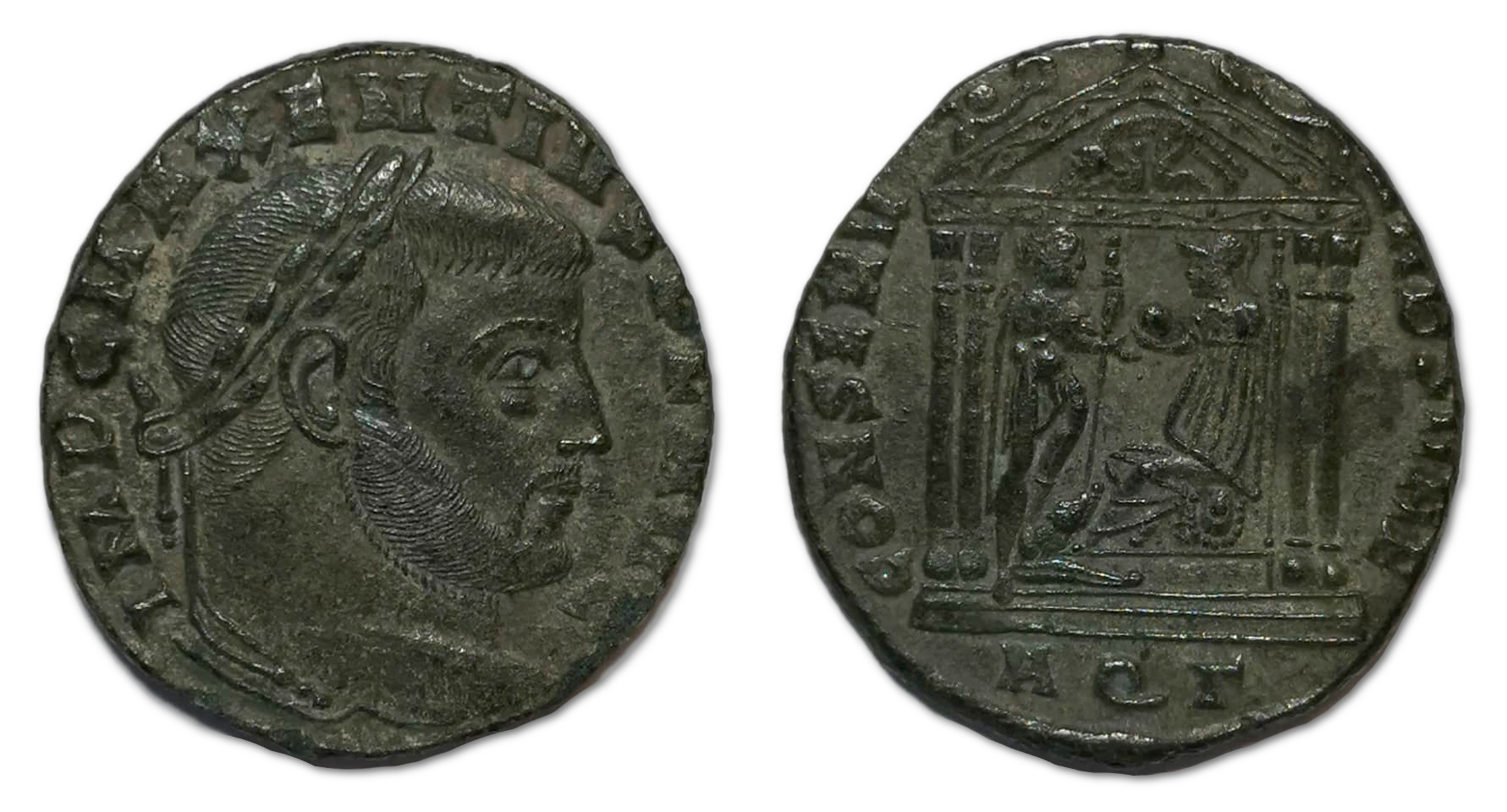When Constantius Chlorus died in 306, his son Constantine was crowned emperor and subsequently accepted by Galerius into the tetrarchy as Caesar. This set the precedent for Maxentius' accession later in the same year.
The latter part of his reign was preoccupied with civil war, allying with Maximinus II against Licinius and Constantine. The latter defeated him at the Battle of the Milvian Bridge in 312, where Maxentius, with his army in flight, perished by drowning in the Tiber River.
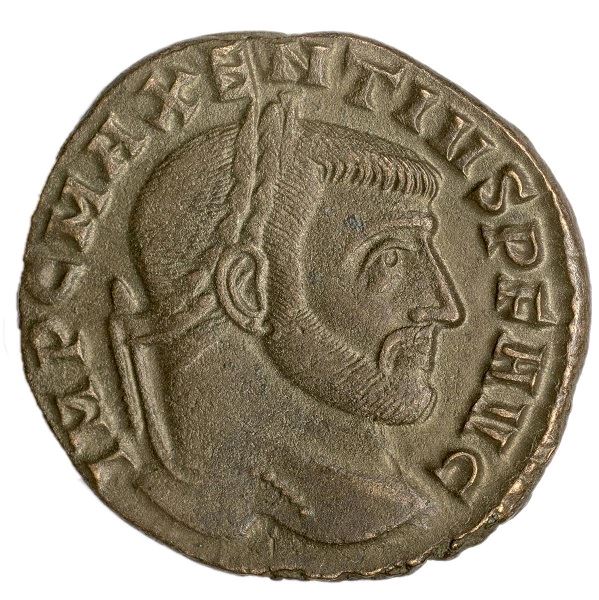
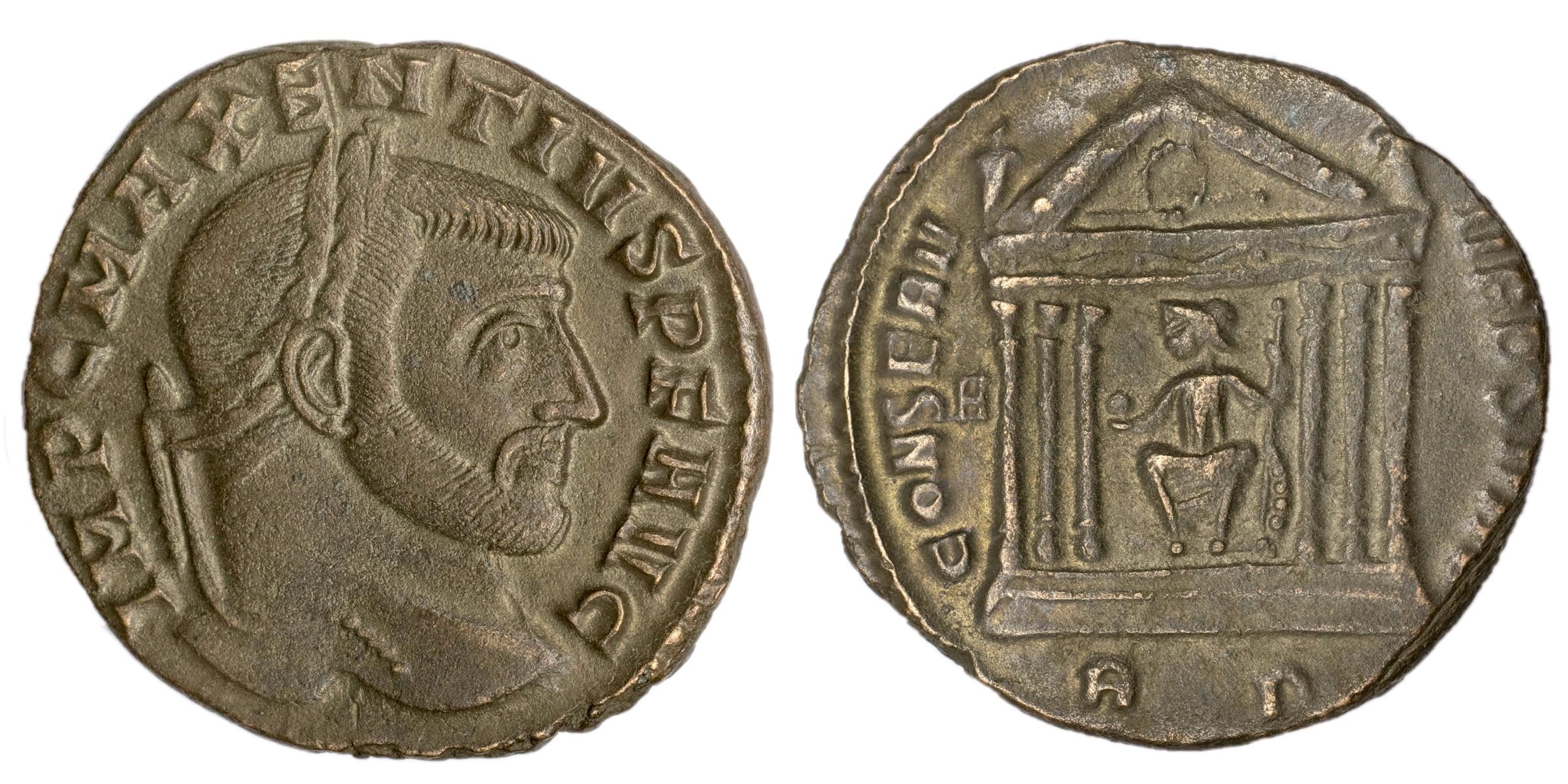
Reverse: Hexastyle temple, with wreath in pediment and containing Roma seated facing on throne, head left, holding globe and spear; shield to right
Die Orientation: 0 H
Weight: 6.26 g
.jpg)
Reverse: AETERNITAS AVG N, The Dioscuri standing facing each other, each holding sceptre and bridles of their horse
Die Orientation: 11 H
Weight: 7.15 g
.jpg)
Reverse: VICTORIA AETERNA AVG N, Victory wearing drapery, advacing left, holding wreath and palm; MOSTP in exergue
Die Orientation: 5 H
Weight: 6.56 g
The fact that the flan is enormous and the coin has been struck perfectly centered with the full detail including the dotted border on both sides, leads me to believe it's a trial strike of some sort.
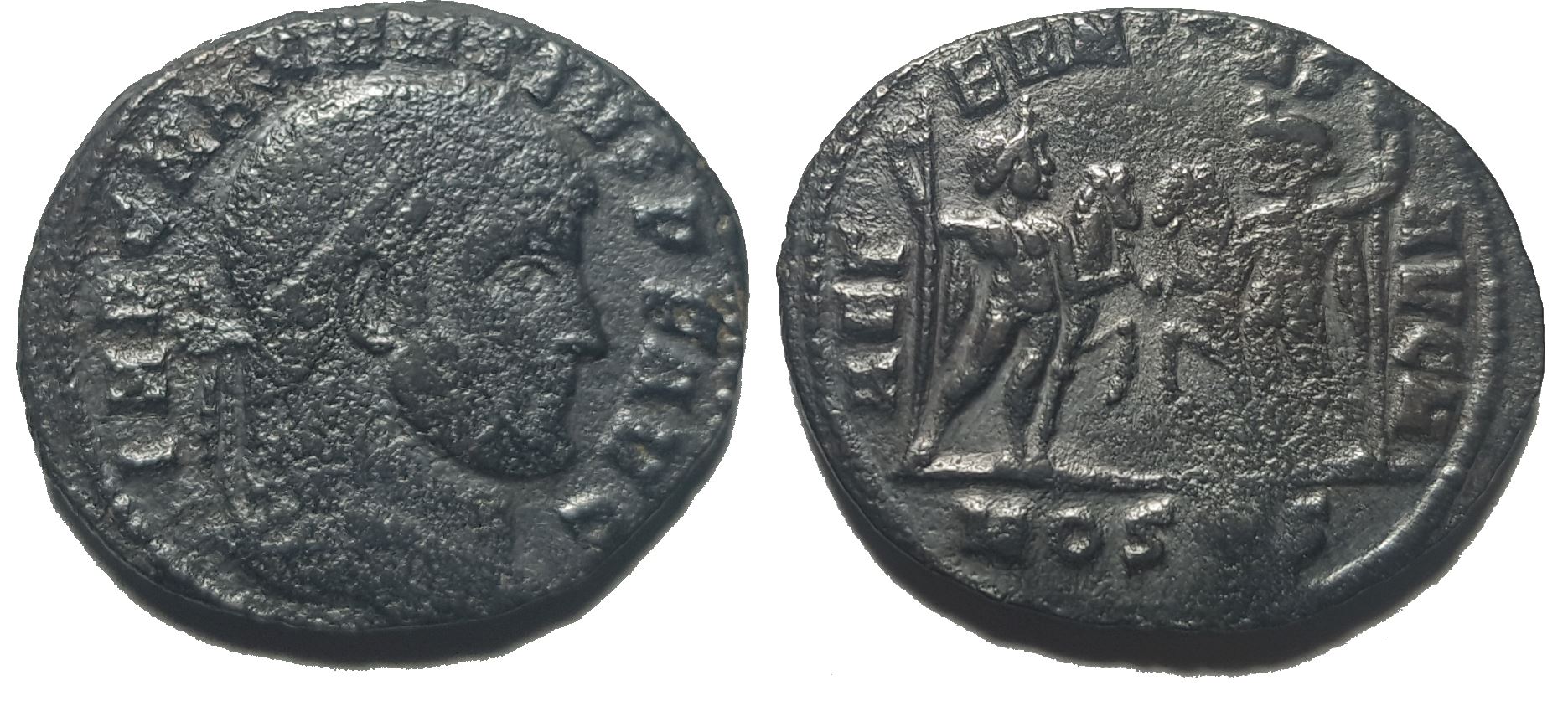
Reverse: AETE-RNITAS A-VGN, Castor and Pollux standing facing each other, each leaning on sceptre and holding bridled horse.
Die Orientation: -
Weight: 5.6 g
.jpg)
Reverse: CONSERV VRB SVAE, Roma seated facing, head left, holding flobe, in hexastyle temple with peaked roof, wreath in pediment. Mintmark RBT
Die Orientation: -
Weight: 5.8 g
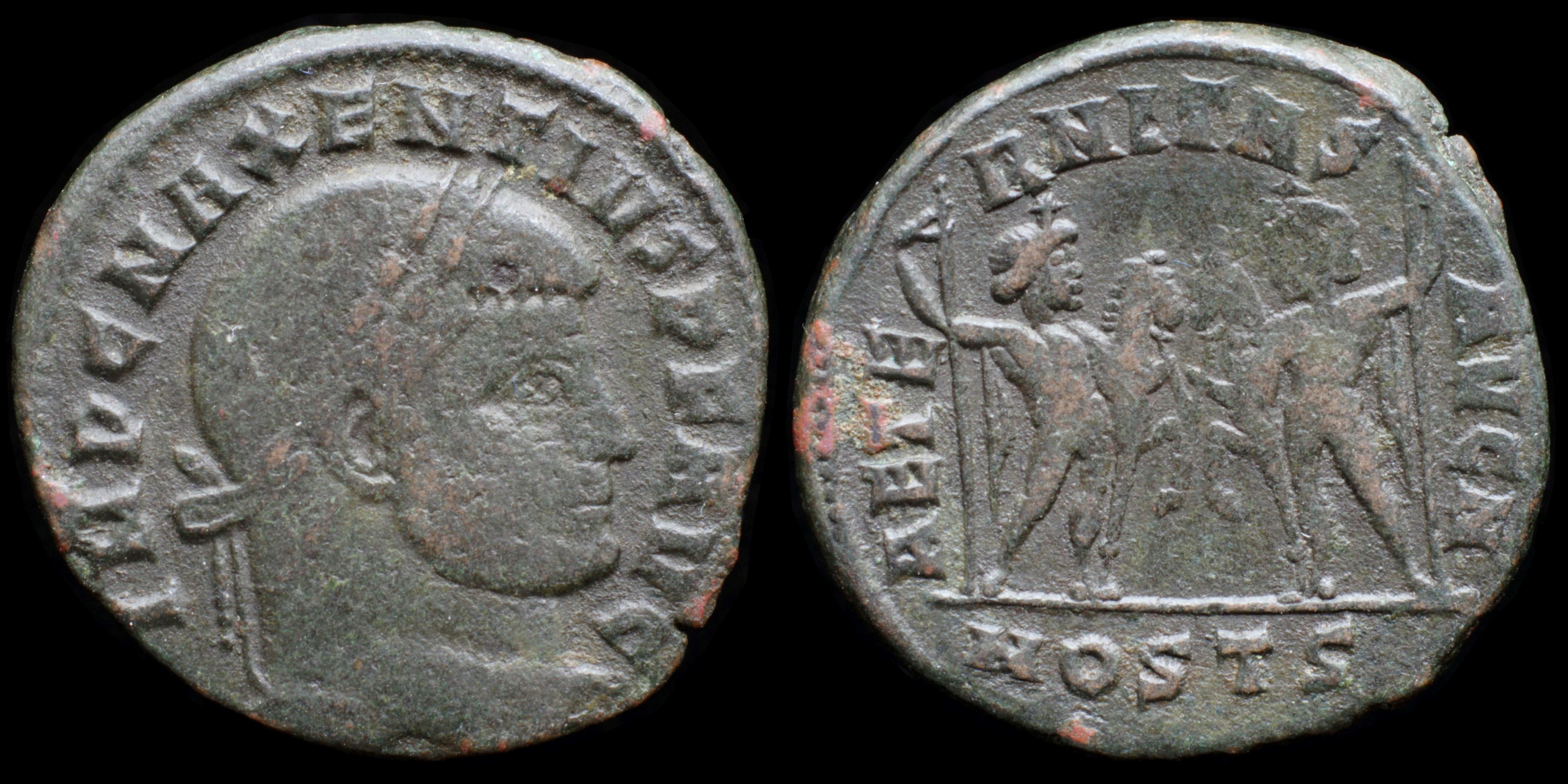
Reverse: Castor and Pollux, each with star above cap, chlamys over shoulder, leaning on scepter with outer arm, holding bridled horse with inner hand; AETE_RNITAS__AVG N / MOSTS
Die Orientation: -
Weight: 6.3 g
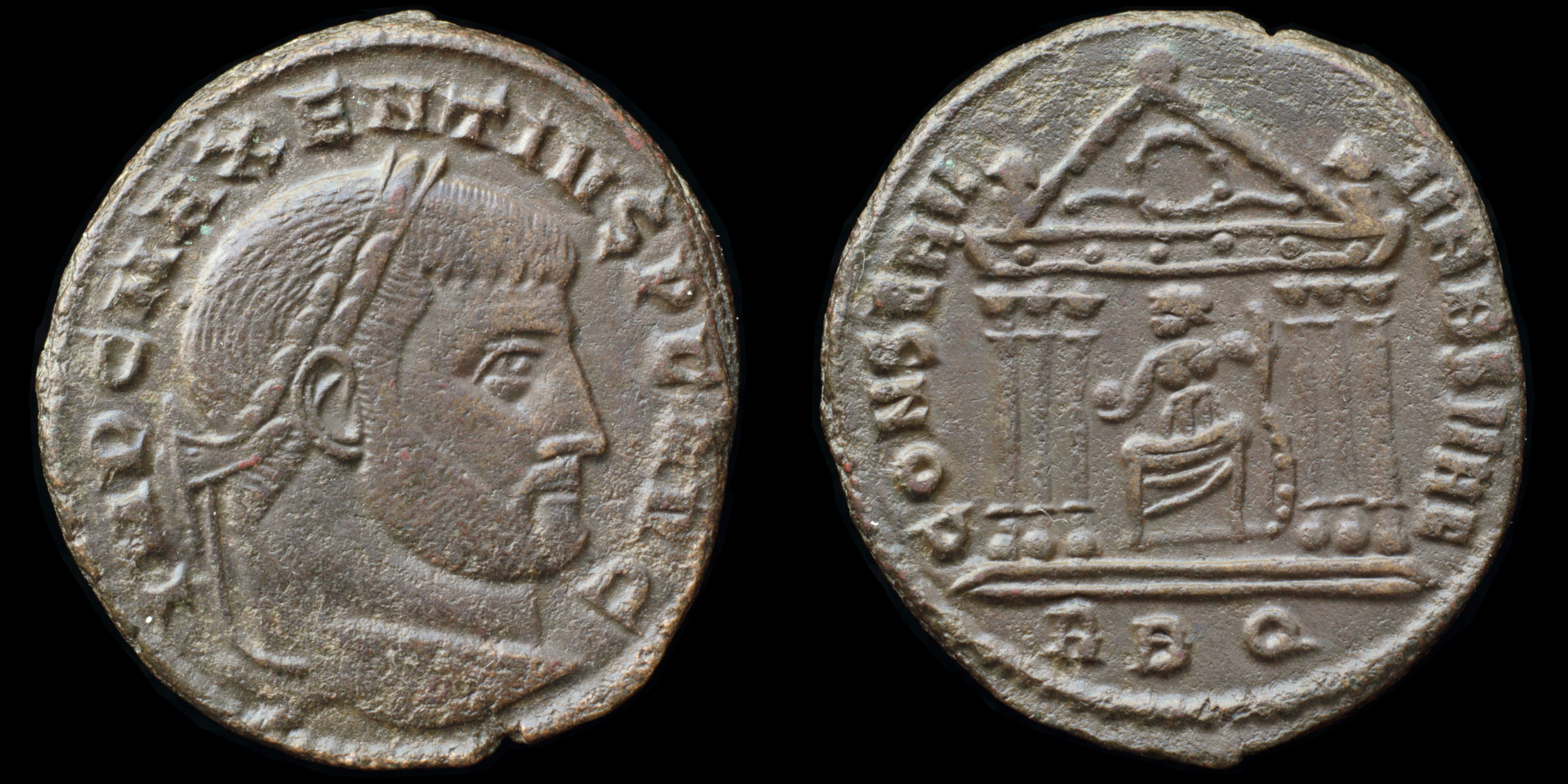
Reverse: Roma seated left within hexastyle temple, holding globe and sceptre, a shield to her right and rear; wreath in thympanon, 2 Victories on the corners; CONSERV_VRB SVAE / RBQ
Die Orientation: -
Weight: 7.6 g
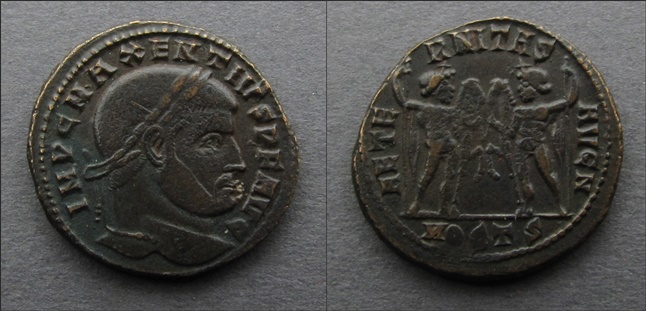
Reverse: AETERNITAS AVG N, the Dioscuri standing facing each other, their horses between; MOSTS in exergue.
Die Orientation: 12 H
Weight: 6.4 g
.png)
Reverse: AETERNITAS AVG N, The Dioscuri Castor and Pollux standing facing each other, each holding scepter and holding a horse by the bridle; MOSTQ in exergue
Die Orientation: 6 H
Weight: 6.05 g
.jpg)
Reverse: CONSERV VRB SVAE, Roma seated facing left, in hexastyle temple, holding globe and scepter; shield at side; crescent in pediment
Die Orientation: 12 H
Weight: 6.2 g

